Pythagoras' theorem proof
Categories: gcse trigonometry pythagoras

In this article, we will see how to prove Pythagoras' theorem.
There are many proofs of the theorem, we will just look at two of them:
- A simple visual proof.
- A proof using algebra.
Here is a video on the topic:
Pythagoras' theorem
Pythagoras' theorem applies to right-angled triangles like this one:
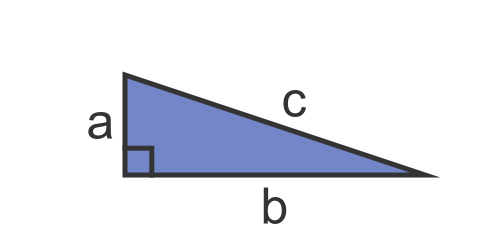
This triangle has sides a, b and c. Side c is the hypotenuse. The hypotenuse is the side that is opposite the right angle. It is also the longest of the three sides.
Pythagoras' theorem is a formula that relates the lengths of the three sides:
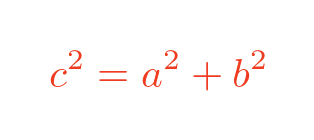
We will prove that this is true.
Visual proof
The visual proof is quite simple. We form a square using four identical triangles, like this:
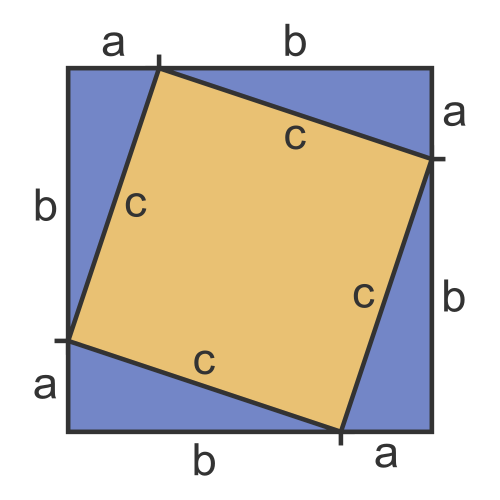
The outer square has sides of length a + b.
The inner square (the yellow area) is a square whose sides have length c because each side of the square is made from the hypotenuse of one of the triangles, which we previously said has length c:

So the yellow square has area:

Now we rearrange the four triangles to form two rectangles:
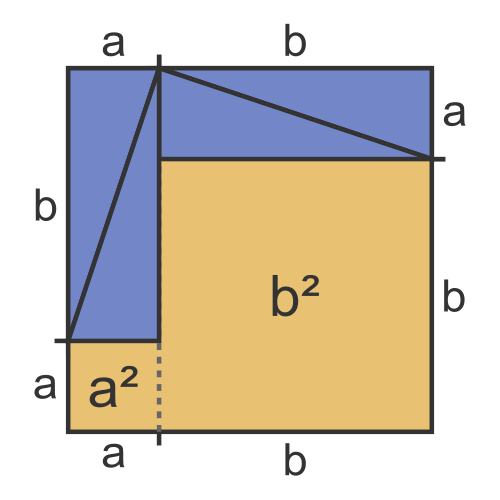
The important thing to notice here is that the outer square still has length a + b, so it is exactly the same size as the previous step.
The rearranged triangles leave a yellow space that can be divided into two squares, one of side a (with area a²) and the other with side b (with area b²). So the total yellow area is:

Since both outer squares are the same size, and both contain four triangles of the same size, it follows that the two yellow areas must also be equal. This proves that:

Be careful with visual proofs!
A problem with visual proofs is that it is easy to make assumptions - if it looks right, you might assume it must be right.
We still need to check that it is valid.
In this case, we are assuming that the yellow area in step 1 is a square. Just because it looks square doesn't mean it is square! It could be a rhombus with sides of length c but the angles might not be right angles. That would change its area.
It isn't difficult to verify that the shape is a square. One way is to use rotational symmetry. The original shape has rotational symmetry of order four because the outer boundary is a square and the corners of the yellow area are on the equivalent points on the sides of the boundary.
This means that if we rotate the shape through 90° the whole figure (including the yellow area) will map onto itself:
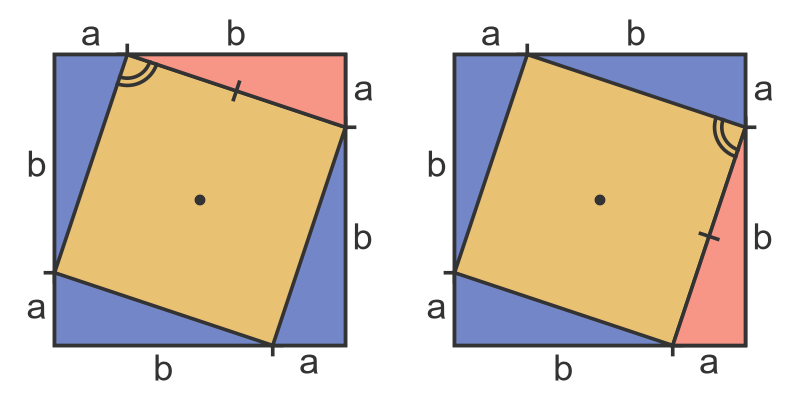
This proves that the two sides marked with a tick must be equal, and the two marked angles must also be equal.
If we rotate the shape through 90° twice more, it proves that all four sides are equal, and all four angles are equal.
Since the angles in a quadrilateral add up to 360°, if the angles are all equal then each angle must be 90°.
A quadrilateral with four equal sides and four right angles must be a square, so the visual proof is valid.
An algebraic proof
If you prefer to use algebra rather than shuffling shapes around, there is a different proof based on the same idea.
We will start from the same diagram as before:

We will calculate the total area of the full square in two different ways. First, we will use the outer dimensions of the square:

This square has side length a + b so its area is:

Expanding the brackets gives:

Simplifying this gives:

Now we will find the area in a different way. These shapes completely cover the full square:
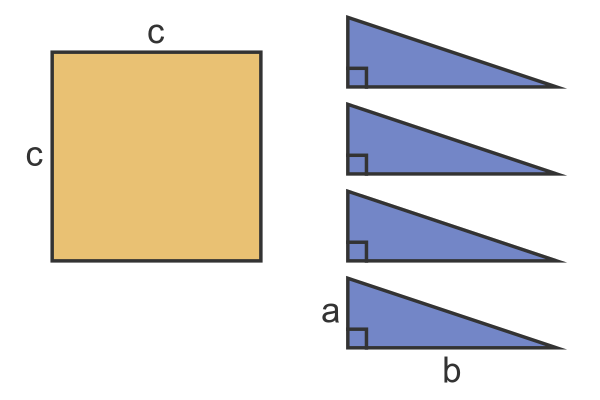
There are four identical blue triangles. Each triangle has area:

So the total area of the four blue triangles and the yellow square is

This is equal to the total area we calculated previously:

So:

Subtracting 2ab from both sides gives us Pythagoras' formula:

See also

Join the GraphicMaths Newletter
Sign up using this form to receive an email when new content is added:
Popular tags
adder adjacency matrix alu and gate angle answers area argand diagram binary maths cartesian equation chain rule chord circle cofactor combinations complex modulus complex polygon complex power complex root cosh cosine cosine rule countable cpu cube decagon demorgans law derivative determinant diagonal directrix dodecagon eigenvalue eigenvector ellipse equilateral triangle euler eulers formula exercises exponent exponential exterior angle first principles flip-flop focus gabriels horn gradient graph hendecagon heptagon hexagon horizontal hyperbola hyperbolic function hyperbolic functions infinity integration by parts integration by substitution interior angle inverse hyperbolic function inverse matrix irrational irregular polygon isosceles trapezium isosceles triangle kite koch curve l system line integral locus maclaurin series major axis matrix matrix algebra mean minor axis n choose r nand gate newton raphson method nonagon nor gate normal normal distribution not gate octagon or gate parabola parallelogram parametric equation pentagon perimeter permutations polar coordinates polynomial power probability probability distribution product rule proof pythagoras proof quadrilateral questions radians radius rectangle regular polygon rhombus root sech segment set set-reset flip-flop sine sine rule sinh sloping lines solving equations solving triangles square square root standard curves standard deviation star polygon statistics straight line graphs surface of revolution symmetry tangent tanh transformation transformations trapezium triangle turtle graphics uncountable variance vertical volume volume of revolution xnor gate xor gate